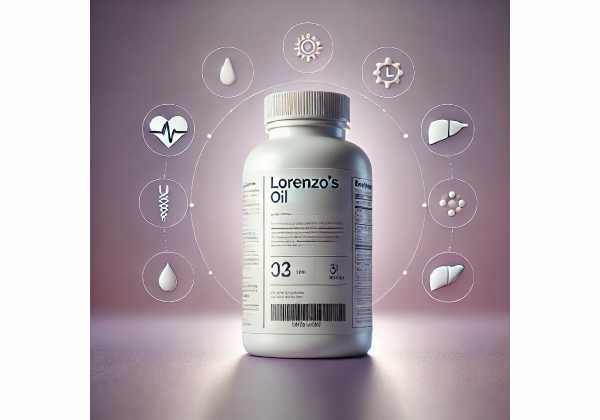Lorenzo’s Oil: Evidence for Asymptomatic ALD Prevention, Dosage, Monitoring, and Risks
Lorenzo’s Oil is a specialized dietary therapy created for X-linked adrenoleukodystrophy (X-ALD), a rare genetic disorder that causes very-long-chain fatty acids (VLCFAs) to accumulate in the brain, spinal cord, and adrenal glands. The oil is a 4:1 mixture of glyceryl trioleate (oleic acid) and glyceryl trierucate (erucic acid). Its central aim is to lower saturated VLCFAs—particularly C26:0—by competing with...
L-Ornithine: Ammonia Control, Stress and Sleep Support, Uses, Dosage, and Side Effects
L-ornithine is a non-protein amino acid your body makes as part of the urea cycle—the metabolic pathway that turns ammonia, a toxic by-product of protein metabolism, into urea for safe excretion. As a supplement, L-ornithine shows the clearest promise in two areas: supporting ammonia clearance (with medical-grade salts like L-ornithine-L-aspartate used in liver clinics) and easing subjective stress or...
Lotus leaf extract: Benefits for Weight and Cholesterol, Practical Use, and Side Effects
Lotus leaf extract (from Nelumbo nucifera leaves) has a long culinary and herbal history across Asia and is increasingly used in modern wellness formulas aimed at weight management, lipid balance, metabolic health, and antioxidant support. Early human trials suggest modest reductions in body fat and improvements in waist measures over 8–12 weeks, while a larger body of animal and...
Lotus seed extract: Blood Pressure Support, Antioxidant Actions, Uses, and Side Effects
Lotus seed extract—derived from the edible seeds of Nelumbo nucifera—brings together the nourishment of a staple food and the targeted activity of a botanical. Unlike stimulant-heavy “fat burners,” lotus seed preparations focus on bisbenzylisoquinoline alkaloids (notably neferine, liensinine, and isoliensinine), polyphenols, and proteins that may influence blood pressure regulation, metabolic balance, oxidative stress, and sleep–stress physiology. Traditional systems use...
L-Phenylalanine: Uses for Focus and Mood, Dosage Guidelines, Interactions, and Side Effects
L-phenylalanine (often shortened to L-Phe) is an essential amino acid that your body uses to build proteins and to make tyrosine—the direct precursor to dopamine, norepinephrine, and epinephrine. Because of these roles, L-phenylalanine supplements are marketed for mood, mental energy, and skin repigmentation support (in combination with light therapy for vitiligo). They also appear in nootropic stacks, pre-workout formulas,...
L-Proline: Collagen Support, Joint and Skin Benefits, Dosage Guidelines, and Side Effects
L-proline is a nonessential (sometimes “conditionally essential”) amino acid best known for its starring role in collagen—the body’s most abundant structural protein. Proline-rich sequences give collagen its triple-helix strength, which supports healthy skin, joints, bones, tendons, and blood vessels. Beyond structure, proline shuttles through a dedicated metabolic loop—the proline–P5C cycle—that connects to cellular energy, redox balance, and stress signaling....
L-Rhamnose: Evidence-Based Benefits for Gut and Skin, How to Take It, Dosage, and Safety
L-rhamnose is a naturally occurring deoxy sugar found in many plants (including citrus peels and buckthorn), in certain bacterial cell walls, and as part of complex molecules called glycosides. Unlike glucose, L-rhamnose is poorly absorbed in the small intestine and typically reaches the colon, where gut microbes ferment it—often producing the short-chain fatty acid propionate. Because of this route,...
L-Serine: Evidence-Based Benefits, Practical Uses, Optimal Dosing, and Safety Precautions
L-serine is a nonessential—yet often conditionally essential—amino acid that sits at the crossroads of protein synthesis, cell membranes, and one-carbon metabolism. Your body makes L-serine from glucose, but demand rises during growth, injury repair, neuroinflammation, and high training loads. In nutrition and clinical research, L-serine has drawn attention for three reasons: (1) it feeds phosphatidylserine and sphingolipid production that...
L-Taurine: Cardiovascular Support, Metabolic Health, Usage Tips, and Safety Considerations
Taurine is a conditionally essential amino sulfonic acid found in the brain, heart, retina, and skeletal muscle. Unlike most amino acids, it is not used to build proteins; instead, it supports cell membrane stability, calcium signaling, bile acid conjugation, and antioxidant defense. In food, taurine occurs naturally in meat and seafood; it is also added to many energy drinks....
L-Theanine: Calm Focus, Stress Relief, Sleep Support, Dosage and Side Effects
L-theanine is a non-protein amino acid found naturally in tea leaves (Camellia sinensis) and certain mushrooms. People reach for it to take the “edge” off stress without feeling sedated, to sharpen attention (especially when paired with caffeine), and to support sleep quality. Unlike many calming ingredients, L-theanine acts fast—often within 30–60 minutes—by promoting alpha brain waves linked with a...
L-Threonine: Gut Barrier Support, Immune Function, Daily Intake, and Side Effects
L-threonine (often shortened to threonine) is one of the nine essential amino acids your body cannot make on its own. You get it from food proteins and, in some cases, from supplements. Because threonine is abundant in mucin (the protective gel that lines your gut), and is built into structural proteins and enzymes throughout the body, it is closely...
L-Tryptophan: Sleep Support, Mood Effects, Optimal Timing and Dose, and Side Effects
L-tryptophan (often shortened to “tryptophan”) is an essential amino acid—meaning your body cannot make it and must get it from food or supplements. It is best known as the raw material for serotonin and melatonin, two signaling molecules that influence mood, sleep, appetite, and the 24-hour body clock. Beyond neuromodulation, tryptophan feeds into the kynurenine pathway that produces nicotinamide...
L-Tyrosine: Benefits for Working Memory and Vigilance, Use Cases, Dosage, and Interactions
L-tyrosine is a conditionally essential amino acid that your body uses to build catecholamine neurotransmitters—dopamine, norepinephrine, and epinephrine—as well as thyroid hormones and skin pigments (melanin). Because stress, sleep loss, heat, cold, and heavy cognitive load can temporarily drain catecholamine signaling, tyrosine has been studied as a short-term “resilience nutrient.” In practical terms, the right dose taken at the...
Lugol’s iodine: What It Is, Real Benefits, Safe Dosing, and Risks Explained
Lugol’s iodine is a simple mixture of elemental iodine (I₂) and potassium iodide (KI) dissolved in water. Created in 1829 by French physician J. G. A. Lugol, it remains a pharmacy staple thanks to iodine’s unique chemistry: in the body, iodide fuels thyroid hormone production; in medicine, concentrated iodine temporarily tames an overactive thyroid; in public health, iodide protects...
Lumbrokinase: Fibrin Support, Stroke Recovery Insights, How to Use It, and Safety Considerations
Lumbrokinase is a group of fibrin-targeting enzymes originally isolated from earthworms and now produced under modern quality controls. People turn to it to support healthy circulation, help maintain blood flow, and complement medical care for clot-related conditions under professional supervision. What makes lumbrokinase distinct is its high fibrin specificity: it works where fibrin exists, which is why it’s often...
Lupeol: Anti-Inflammatory and Antioxidant Properties, Evidence, Dosage, and Side Effects
Lupeol is a plant-derived triterpenoid found in mango, olive, aloe, and many medicinal herbs. Over the past two decades it has drawn wide attention for its anti-inflammatory, antioxidant, and cytoprotective actions across skin, metabolic, cardiovascular, and neurological models. Researchers also study lupeol for selective anticancer effects in cells and animals, and for its potential to modulate master signaling hubs...




















